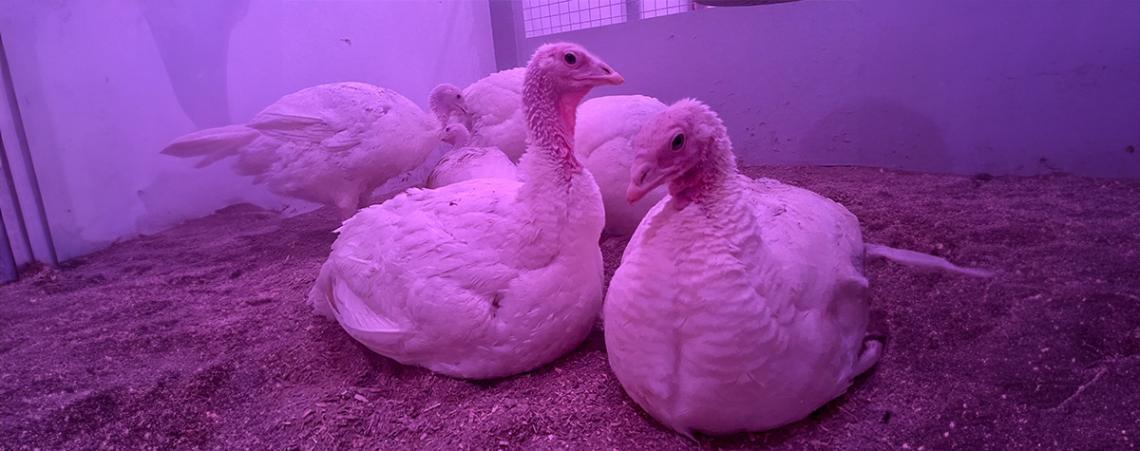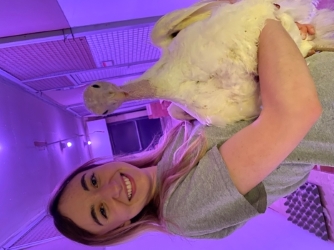Lighting research lays foundation for improving turkey production

When Clara Ziezold walked into a lecture hall one day during her undergrad at the University of Guelph, she couldn’t have known the guest speaker would set her on a course to research ways to improve reproductive efficiency for the Ontario turkey industry.
Now a PhD candidate in U of G’s Department of Animal Biosciences, Ziezold has completed several projects on the impact of lighting on turkey breeder hen performance, helping build a bigger body of work to support greater productivity for the turkey sector.
![]()
A summer job at commercial turkey production company Hybrid Turkeys piqued Ziezold’s interest in the birds. And when U of G researcher Dr. Grégoy Bédécarrats talked in a class lecture about his work on spectrum lighting in laying hens, she approached him about doing similar work in turkeys. Bédécarrats became her academic supervisor, with Hybrid Turkeys as an industry partner in her ongoing research.

the potential impact of lighting on reproductive
performance of turkey breeder hens.
“Very little research has been done on the impact of lighting in turkeys,” says Ziezold. “We know red LED light improves egg production in layers, so we wondered if we could apply the same lighting principles to turkey production.”
The researchers are looking at the potential for lighting colour and intensity to improve reproductive efficiency in turkey breeder hens through greater egg production and longer production cycles. Their findings may ultimately lead to on-farm improvements and benefit the turkey industry from breeding companies to producers.
The lighting research began with two trials with Hybrid Turkeys on a commercial farm. The team compared egg production under red LED lighting and white fluorescent lighting. Using red spectrum lighting at double the intensity used for layers, they saw a three-per-cent improvement in egg production over industry-standard lighting.
Trials were then conducted at the Ontario Poultry Research Centre, which is owned by Agricultural Research and Innovation Ontario and managed by U of G through the Alliance. Looking at both low- and high-intensity red spectrum and white lighting, the team compared more production parameters, including number of eggs, estrogen levels, egg quality, body weight and uniformity, and behaviour to evaluate any impact on hen welfare.

The results raised more questions—as is often the case with research—but Ziezold knows it’s a good place to begin to better understand the effect light may have on turkey egg production.
High-intensity red lighting improved egg production by about 2.5 per cent. But it was low-intensity lighting (regardless of colour) that led to higher breeder hen body weights, egg weights and body uniformity.
“Based on our previous work with chickens, we were expecting a strong effect of light spectrum on egg production and hormone levels in turkey breeder hens,” says Bédécarrats.
“There is definitely more work to do because at this point, although light treatment did seem to have an impact on egg production in turkey breeders, we could not reach statistical significance under our experimental paradigm,” says Ziezold.
For Bédécarrats, Ziezold has been an outstanding student on this project from conception to execution. “She’s presented at international conferences, receiving travel grants and winning student presentations. And she’s fully engaged with our industry partners to communicate findings as they come,” he says.
The Ontario Agri-Food Innovation Alliance is a collaboration among the Government of Ontario, Agricultural Research and Innovation Ontario, and the University of Guelph. Ziezold received a Highly Qualified Personnel (HPQ) scholarship, funded by the Alliance and Food from Thought, as part of this research.